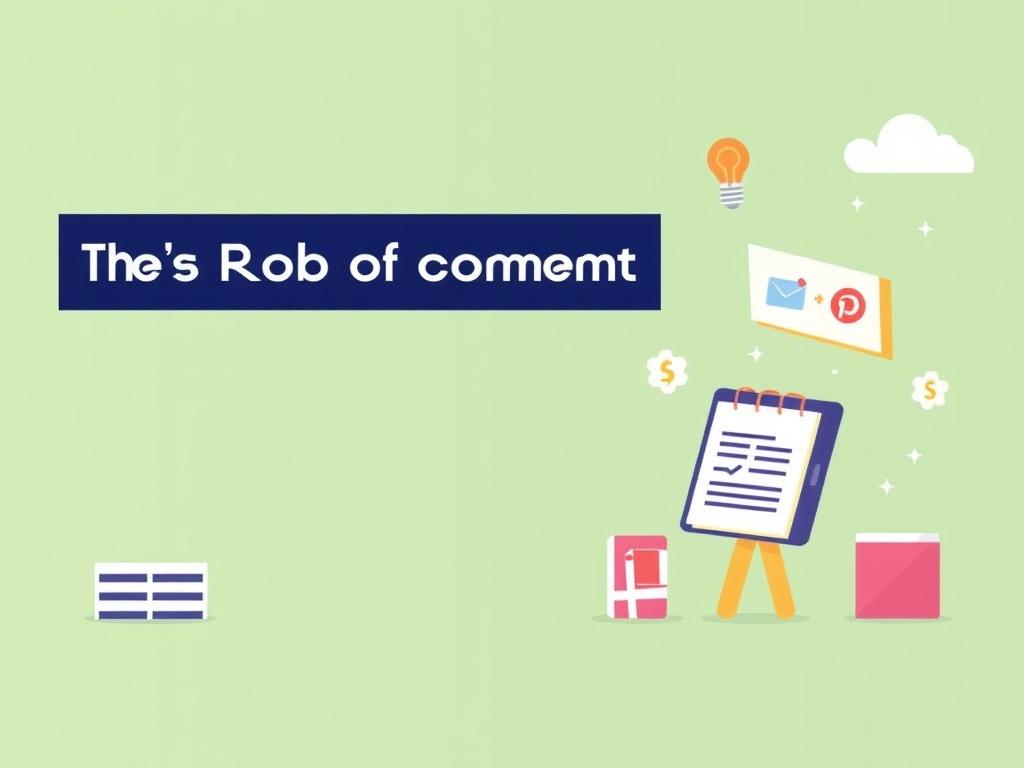Launching a product is equal parts science and storytelling. You’ve poured time, effort, and money into building something that solves a problem, delights a user, or opens a new market. But unless people know about it—and understand why it matters—it won’t reach its potential. That’s where content steps in. Content isn’t just a marketing add-on; it’s the voice of your product, the bridge between features and value, and the vehicle that turns interest into trial, and trial into adoption. In this article we’ll walk through why content matters, how to craft it, what assets to create, and how to execute a content-driven product launch that actually moves the needle.
Why content is the backbone of any launch
A product launch is a story with a beginning, middle, and a call-to-action. Content is how you tell that story consistently and repeatedly across channels. Think of content like scaffolding: it supports every touchpoint your audience experiences—from a tweet that sparks curiosity, to a landing page that converts, to a help center that secures long-term retention.
Content makes complex things simple. It translates product specs into benefits, turns industry jargon into everyday language, and answers the «What’s in it for me?» question before potential customers even ask. Good content reduces friction—people understand your value faster, trust builds quicker, and decisions are made with clarity.
Lastly, content is cumulative. A blog post may introduce a concept, a video can show the product in action, an email can provide an incentive, and documentation can reassure long-term users. All these assets work together to create momentum.
How content shapes perception and demand
Perception drives demand. When content highlights the right problems, frames your product as a solution, and does so with credibility, it primes the market. Consider two companies with similar products: the brand that tells a clearer, more memorable story will likely capture attention first. Content builds associations—quality, trust, innovation—and those associations shape buying behavior.
Content is also the engine of discovery. SEO-optimized posts, targeted social campaigns, and well-placed PR pieces ensure your product shows up where prospects are looking. Without content, even the best product can remain invisible.
Key content objectives for a launch
Before writing a single word, identify what content needs to achieve. Common objectives include:
- Education: Explain the problem, the context, and why a new solution matters.
- Awareness: Reach potential customers where they already are.
- Consideration: Provide deeper information that helps prospects evaluate options.
- Conversion: Drive sign-ups, purchases, or trials with clear calls-to-action.
- Retention: Support early users with helpful documentation and onboarding content.
- Advocacy: Empower satisfied customers to share and recommend your product.
These objectives should map to specific content types and distribution channels so you can measure success and iterate quickly.
Prioritizing objectives
Every launch has limited bandwidth. Prioritize objectives based on where your product sits in the market. If you’re first to market with a novel idea, focus on education and awareness. If you’re entering a competitive space, invest more in differentiation and case studies. Map objectives to a timeline—what needs to happen pre-launch, day-of launch, and post-launch—to keep content efforts aligned.
Essential content types for a product launch

There are dozens of content formats you can use, but some are particularly impactful for launches. Here’s a practical list and why each matters:
- Hero landing page: The central hub for your launch. Clear value proposition, hero image/video, benefits, social proof, and a prominent CTA.
- Explainer video: Converts faster than text for many audiences, especially for complex products. A 60–90 second demo or animation can dramatically improve engagement.
- Blog posts and long-form articles: Great for SEO and for educating your audience about the problem space and how your product fits in.
- Email sequences: Nurture leads, onboard early users, and re-engage interested prospects through personalized messaging.
- Product documentation and FAQs: Reduce churn by answering common questions and smoothing onboarding.
- Case studies and testimonials: Provide proof that the product delivers value in real-world use.
- Social media content: Bite-sized posts, images, and short videos that drive traffic and conversation.
- Press materials (press release, one-pager): Enable journalists and analysts to write about your product accurately.
- Webinars and demos: Allow deeper engagement and live Q&A for high-consideration buyers.
- Paid ads (copy and creatives): Amplify reach with targeted messaging to specific audience segments.
Table: Content types mapped to launch objectives
| Content Type | Primary Objective | When to Use |
|---|---|---|
| Hero Landing Page | Conversion & Awareness | Pre-launch (teaser), Launch, Post-launch (main hub) |
| Explainer Video | Education & Consideration | Pre-launch & Launch |
| Blog Posts | SEO & Education | Pre-launch (thought leadership) & Post-launch |
| Email Sequences | Nurture & Conversion | Pre-launch sign-ups, Launch, Onboarding |
| Documentation | Retention | Launch & Ongoing |
| Case Studies | Consideration & Trust | Launch & Post-launch |
| Press Materials | Awareness | Launch |
| Webinars | Consideration & Conversion | Pre-launch (education) & Post-launch (deep-dive) |
Crafting the launch narrative: messaging that matters
A compelling narrative ties everything together. It starts with clarity on three questions:
- Who is this for?
- What problem does it solve?
- Why is this solution different and better?
Your messaging should be crisp, benefit-focused, and consistent across all assets. Consistency means using the same product positioning, tone, and primary CTAs on the landing page, emails, press materials, and ads.
Finding the core message
Workshopping a core message often starts with a simple formula: for [target audience], who [needs/experiences], our product [solves/does X] by [how it works], unlike [alternatives], because [unique differentiator]. Use this statement as a north star—every piece of content should be able to tie back to it.
For early-stage launches, put the benefit before the feature. People care less about technical specs and more about how their lives or businesses will improve. Translate features into outcomes: faster, cheaper, simpler, more reliable.
Audience segmentation and tailoring content
Not every reader is at the same stage. Segment your audience by their intent and craft content to move them one step further down the funnel.
- Top-of-funnel (TOFU): Use awareness content like blog posts, social snippets, and animated explainers. The goal is to attract visitors and educate them about the problem space.
- Middle-of-funnel (MOFU): Use webinars, case studies, and detailed comparison guides to help prospects evaluate your solution.
- Bottom-of-funnel (BOFU): Use free trials, detailed demos, pricing pages, and targeted emails to drive conversions.
Tailor the same message for different personas. For example, a product that helps teams automate reporting might speak to engineering about integrations and reliability, while speaking to finance about time saved and cost reduction. Your content should adapt the core value proposition to each persona’s priorities.
Timing and the launch content calendar
Good launches are organized. A content calendar keeps everyone on the same page and prevents last-minute scrambles. Typical phases include:
- Teaser (4–6 weeks before launch): Build curiosity with early blog posts, social leaks, and email sign-ups for launch notifications.
- Pre-launch (2–3 weeks before): Release deeper content like explainer videos, press outreach, and early access invitations.
- Launch day: Publish the hero landing page, press release, key emails, social posts, and the explainer video. Make sure support and sales are ready.
- Post-launch (1–3 months after): Publish case studies, customer stories, and deeper educational content to sustain momentum.
Example content calendar items
- Week -6: Teaser blog post, save-the-date on social, landing page for waitlist sign-ups.
- Week -4: Publish product explainer blog, begin email drip to sign-ups, outreach to early beta users.
- Week -2: Release explainer video, prepare press kit, finalize landing page copy and CTAs.
- Launch day: Publish news, send launch email to list, activate paid campaigns, host a live demo or Q&A.
- Week +2: Release first case study, push customer testimonials, monitor feedback and customer service responses.
Design and UX considerations for content
Content and design should work together. A poorly formatted blog post or a cluttered landing page can ruin otherwise great messaging. Pay attention to readability: short paragraphs, subheadings, bullet lists, and visual hierarchy help people scan and absorb content quickly.
Key visual elements to plan for:
- Hero images or videos that demonstrate use cases at a glance.
- Screenshots or product walkthroughs with annotations.
- Consistent brand colors, fonts, and tone across all materials.
- Responsive design so content looks great on mobile and desktop.
Accessibility matters too. Use descriptive alt text for images, provide captions for videos, and ensure color contrast is sufficient. Accessible content broaden your reach and prevents avoidable friction.
SEO and discoverability: building long-term impact

Launch content isn’t just for immediate visibility; it also drives organic traffic for months and years. Invest in SEO from day one. That means:
- Keyword research for the problem space rather than just the product name.
- High-quality, long-form articles that answer common search queries.
- Optimized meta titles, descriptions, and proper use of headings in your pages.
- Internal linking between related content to guide visitors deeper into your site.
A well-optimized pillar post or guide can become a traffic magnet that feeds your launch funnel continually. Balance promotional content with genuinely helpful resources so search engines and users reward you.
Distribution strategies: getting your content seen
Creating great content is necessary but not sufficient. Distribution determines whether content finds an audience. Mix organic reach with paid amplification and partnerships.
- Owned channels: email list, blog, social accounts, and your product dashboard.
- Earned channels: PR coverage, guest posts, mentions by industry influencers.
- Paid channels: search ads, social ads, sponsored content, and influencer placements.
Promote content at the right cadence. For example, repurpose a webinar into a blog post, then slice that into social posts and an email summary. Repurposing extends the life of each asset and reaches different audience preferences.
Leveraging influencers and partners
Influencers and partners can broaden credibility quickly, especially in niche markets. Choose partners whose audiences overlap with yours and who have authentic relevance to the product. Provide them with well-crafted materials (one-pagers, demo accounts, exclusive access) so they can share genuine insights rather than thin endorsements.
Measurement: KPIs for content-driven launches
You can’t improve what you don’t measure. Define KPIs for each content objective:
- Awareness: impressions, organic traffic, social shares, mentions in press.
- Consideration: time on page, content downloads, webinar attendance, email open rates.
- Conversion: sign-ups, trial activations, purchases, click-through rates (CTRs) on CTAs.
- Retention: onboarding completion rates, help center usage, churn rate.
- Advocacy: referral sign-ups, Net Promoter Score (NPS), user-generated content.
Use UTM codes and tracking pixels to attribute results to the right content pieces and channels. Regular reporting (weekly during launch, monthly afterward) helps you double down on what works and pivot on what doesn’t.
Experimentation and iteration
A launch rarely goes perfectly. Treat content as a set of experiments: A/B test headlines, subject lines, hero images, and CTAs. Small tweaks in copy or placement can yield significant conversion improvements. Document learnings and apply them to subsequent content.
Common pitfalls to avoid
Many teams make avoidable mistakes during launches. Here are the ones that trip up even experienced teams:
- Not defining a clear audience: When you try to speak to everyone, you speak to no one. Be specific.
- Overloading launch day with too many uncoordinated messages: It confuses buyers and dilutes impact.
- Ignoring support and documentation: Early adopters need help; poor onboarding increases churn.
- Relying solely on paid traffic: Paid can get quick visibility, but organic content sustains it.
- Skipping measurement: Without metrics, you won’t know which content is actually driving results.
Content operations: teams, tools, and workflows
Successful content launches require coordination. Define roles: who writes, who edits, who designs assets, who schedules distribution, and who analyzes performance. Use a shared calendar and project management tool to track deadlines.
Helpful tools:
- Content management system (CMS): Quickly publish and update pages.
- Email marketing platform: Segment lists and automate sequences.
- Analytics tools: Google Analytics, Mixpanel, or equivalent for deep insights.
- Design tools: Figma or Canva for visuals; a video editor for short clips.
Make one person responsible for the launch cadence and one person responsible for quality control. That reduces ambiguity and ensures consistent execution.
Scaling content after launch
A launch should be the beginning of a sustained content push. After launch:
- Repurpose the most successful pieces into other formats (video, infographic, podcast).
- Create deeper educational content like how-to series or an academy for users.
- Solicit and publish user stories and case studies to build trust over time.
- Invest in SEO growth by expanding pillar content and answering long-tail queries.
Sustained content development helps convert late adopters and moves the product from a launch spike to steady growth.
Using feedback loops
Collect customer feedback from sessions, surveys, and support tickets. Feed those insights back into your content roadmap—if users are confused about a feature, create a clear guide. If a use case is gaining traction, build marketing materials around it. The content that responds to real user needs is the most valuable.
Checklist: content-ready product launch

| Task | Done? |
|---|---|
| Core message and positioning statement drafted | [ ] |
| Hero landing page live with CTA | [ ] |
| Explainer video created and hosted | [ ] |
| 3+ blog posts addressing problem space | [ ] |
| Email sequences for pre-launch, launch, and onboarding | [ ] |
| Press materials and list of journalists | [ ] |
| Support docs, FAQs, and onboarding flows ready | [ ] |
| Measurement plan with KPIs and tracking set up | [ ] |
| Content calendar and distribution plan finalized | [ ] |
Real-world examples: content-driven launches that worked
Look at companies that used content effectively to launch. One early example is how Slack used storytelling and customer narratives to show how teams collaborated better. Their product demos and insider glimpses into real workflows helped prospective users see themselves using Slack. Another example is how many SaaS companies use in-depth guides and calculators to surface ROI—these become evergreen pieces that attract qualified leads over time.
Even small startups can win: a single well-timed blog post that answers a niche question can drive sign-ups for months, especially when picked up by community forums or aggregator sites.
Putting it all together: an actionable roadmap
Here’s a simple step-by-step roadmap you can adapt for your launch:
- Define your audience and core message. Write the positioning formula and refine it until it’s clear and snappy.
- Audit existing content to see what can be reused or updated.
- Build the hero assets: landing page, explainer video, and one high-value educational post.
- Create the lead capture mechanism (waitlist, trial sign-up) and pre-launch email sequence.
- Prepare press materials and reach out to partners for coordinated announcements.
- Run a soft launch with beta users to collect quotes and feedback for case studies.
- Launch publicly with a coordinated push across owned, earned, and paid channels.
- Monitor performance, collect feedback, and iterate on the content based on data.
- Continue producing educational and case-driven content to sustain growth.
Final practical tips
- Write for clarity, not cleverness. Your main goal is to make the value obvious.
- Prioritize mobile-first users—many prospects will see your content on phones.
- Make it easy to share: add social buttons, short URLs, and prewritten tweet copy.
- Respect attention spans: lead with the core message, then offer layers of detail for those who want it.
- Plan support and customer success materials before scaling acquisition to avoid high churn.
Conclusion
Content is the bridge between your product and the people who need it; treat it as a strategic asset from day one. From the hero landing page to follow-up documentation, each piece of content plays a role in educating, persuading, converting, and retaining users. Prioritize clarity, align messaging to audience segments, plan a realistic content calendar, and measure everything so you can iterate. When content and product move together, launches stop being one-off events and become the start of a sustainable growth engine.